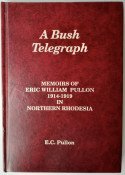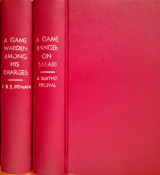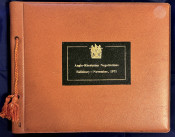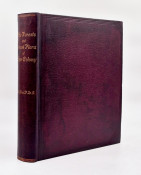By Andrew Sparrman, M.D., Professor of Physic at Stockholm, fellow of the Royal Academy of Sciences in Sweden, and Inspector of Its Cabinet of Natural History. Translated from the Swedish original. With plates in two volumes
First English Edition: 2 volumes: I. xxviii, 368 II, viii, 354, (ii errata and directions to the book-binder), pages, copper engraved frontispiece in volume 1, 9 engraved plates bound at the end of each volume, old half leather with marbled paper sides very worn and splitting along the spines but holding firmly on the ties, some of the plates are slightly foxed, contents are free of foxing, a good copy.
Pages 353 and 354 in Volume 2 incorrectly numbered 349 & 350.
Book plates on the endpaper of both volumes.
Quarterly Bulletin of the South African Library, volume 1, (2) pages 42-48 December 1946: This edition contains considerably better plates than the German Edition.
From A South African Bibliography, Volume 4, page 362: ‘British Museum and Library of Congress give the translator as Georg Forster, but according to Professor Forbes in his edition of Sparrman' s Voyages published in 1975-77 (Van Riebeeck Society), the translator was probably Charles Rivington Hopson.
Mendelsohhn (Sidney) South African Bibliography, volume 2 page 414 -415: ‘An enthusiast in the study of natural history from his youth, the author was overjoyed at being enabled to proceed to the Cape, through the influence of his friend Captain Ekeberg with the Royal Swedish East India Company. Sparrman's nominal position in the Colony was that of tutor to the children of Mr. M. Kerst, sub-governor of the Cape, but he was also appointed interpreter at False Bay, and received permission from Governor Van Plettenberg to practise as a doctor. He made several excursions into the country in search of natural history specimens, and he gives some valuable information respecting Cape Town and the neighbouring districts at this period. On his arrival at the Cape on January 10, 1772, he had only the small sum of twenty-five rix dollars in his possession, but the kindness of his reception, and the hospitality of the colonists, enabled him to pursue his researches, and his expenses on his short expeditions were defrayed by the Swedish East India Company. About the latter end of the year, the English Exploring Expedition under Captain Cook visited Table Bay, and Sparrman was invited to accompany it, and he sailed in the Resolution on November 22, 1772. He did not return to South Africa until March 1775, when he determined to make an expedition into the interior with a friend named Immelman, and they made a start on July 25th, the journey being extended to April 1776. They penetrated through Kaffraria as far as “Bruntjes Hoogte,” and the narrative of their travels is interesting and instructive, and is described by Mr. Theal as the most trustworthy account of the Cape Colony and the various races of people then residing in it " that had been published in the eighteenth century. The author relates many incidents illustrating the hospitality of the Dutch farmers and their dense ignorance of matters outside their own country, and he makes allusions to the cruelty of the treatment of the slaves by the lower classes of the colonists. He frequently draws attention to the inaccuracies to be met with in Kolbe's account of the Cape, and throws considerable doubt on the veracity of many of his statements. Sparrman died at Stockholm in 1820, at the age of seventy-three; his work, written in Swedish, was translated and published in French, English, and German, and went through several editions.’
S2A3 Biographical Database of Southern African Science (https://www.s2a3.org.za/bio/Biograph_final.php?serial=2663)
Born: 27 February 1748, Tensta, Uppland, Sweden.
Died: 9 August 1820, Stockholm, Sweden.
‘Anders Sparrman, Swedish physician and naturalist, was the son of Pastor Eric Sparrman and his wife Brita Hogbom. He enrolled in the University of Uppsala in 1757 and five years later started studying medicine. One of his teachers was the famous Swedish botanist C. Linnaeus the elder, while Carl P. Thunberg was an older fellow student. From December 1765, when he was only 17, to August 1767 Sparrman travelled as ship's surgeon to Canton, China, with Captain Carl G. Ekeberg and upon his return submitted a dissertation to Linnaeus entitled Dissertatio Academica sistens Iter in Chinam (Uppsala, 1768) - a pamphlet of 15 pages in Latin outlining his voyage to China. That same year he became a student member of the Swedish Chirurgical Society. After completing his medical studies in 1770, Ekeberg and Linnaeus arranged for him to visit the Cape of Good Hope as a naturalist. He arrived in Table Bay on the Stockholms Slott, a ship of the Swedish East India Company, on 12 April 1772. During his absence from Sweden the University of Uppsala conferred on him the degree Doctor of Medicine in December 1775.
‘Soon after his arrival Sparrman spent a few days collecting plants and insects in the vicinity of Cape Town with Thunberg, who had arrived at the Cape four days after him. However, for most of that year he tutored the children of J.F. Kirsten in Simon's Town to make a living, collecting plants and insects in his spare time. In September he moved with the Kirsten family to their homestead Alphen, near Constantia, from where he undertook an eight day excursion on foot to Paarl, accompanied by Frans P. Oldenburg.
‘In November 1772 he was engaged as assistant naturalist by the zoologist J.R. Forster, naturalist on Captain James Cook's second voyage of exploration, when the expedition visited the Cape in the Resolution and Adventure. Leaving the Cape on 22 November 1772, their journey took them to New Zealand, Polynesia (including Tahiti), Easter Island, and the southern tip of South America. During the 28 month voyage they penetrated beyond the Antarctic Circle in three widely separated areas. Sparrman described many plants during the voyage, which were later published by Forster and his son, but received little recognition for his contributions to the scientific results of the expedition.
‘He returned to the Cape on the Resolution on 21 March 1775 and remained there until 11 May 1776. For four months he practiced medicine in Cape Town and thus was able to finance his own expedition to the eastern Cape, from 25 July 1775 to 15 April 1776. Traveling by horse and ox wagon and accompanied by the young D.F. Immelman, he first went to the warm spring at present Caledon, where he took the waters and collected for about a month. He then continued towards Mossel Bay and via Attaquas Kloof (near Robinson Pass) to the Little Karoo, following the Langkloof eastwards to Algoa Bay. The furthest point reached was on the Great Fish River near Cookhouse. His excavation of a stone mound in the Eastern Cape has been described as the first archaeological excavation in southern Africa (Robertshaw, 1979).
‘Sparrman first described his journey in "An account of a journey into Africa from the Cape of Good Hope, and a description of a new species of Cuckow" in the Philosophical Transactions of the Royal Society of London (1777). The paper included the first description of Cuculus indicator (now Indicator indicator, the Greater Honeyguide), which he collected on the Great Fish River near Somerset East. During his stay at the Cape he sent plants and insects to Linnaeus, but brought many other specimens back with him when he returned to Sweden. Most of these went to the Swedish Academy of Sciences and came to be housed in the Riksmuseum, Stockholm. They include a foal of the quagga and a male blue antelope (Hippotragus leucophaeus), both now extinct. On this second visit his interest was mainly in mammalian zoology, rather than botany. He made and recorded many accurate observations and dissected and described his specimens in painstaking detail. For part of the time he appears to have made daily observations of the weather.
‘After departing from the Cape in the Stockholms Slott in 1776 Sparrman visited London for a few months to identify specimens, returning to Sweden in August. There he stayed with the great entomologist Baron Charles De Geer (who described some of his insects in 1778) while working on his collections of plants, animals and ethnographic material. He was elected a member of the Kunglika Svenska Vetenskapsakademien (Royal Swedish Academy of Science) in 1776, serving two terms as president in 1778 and 1785. During 1777-1780 he published more than twenty papers, many of them descriptions (in Swedish) of Cape plants and animals in the Handlingar (Proceedings) of the Academy. These papers dealt with, among others, Protea sceptrum-gustavianum (1777, later renamed Paranomus sceptrum), the Honey badger (1777), Black rhinoceros (1778), Hippopotamus (1778), a supposedly poisonous gecko (1778), the Black wildebeest (1779), African buffalo (1779), Red hartebeest (1779), Eland (1779), Cape ash (1779), Bushbuck (1780), and Springbok (1780). Though most of these had earlier been described by others, he is still credited with the first descriptions of the African buffalo (Syncerus caffer and Cape ash (Ekebergia capensis).
‘Sparrman's most important publication, which included many of the descriptions referred to above, was his Resa till Goda Hopps-Udden... (1783), translated into English as A voyage to the Cape of Good Hope, towards the Antarctic polar circle, and round the world; but chiefly into the country of the Hottentots and Caffres, from the year 1772, to 1776 (London, 1785, 2 vols). A reprint of the English edition, with introduction and explanatory notes by V. Forbes, was published by the Van Riebeeck Society in 1975-1977. It was the first personal account of extensive travels in the settled parts of the Cape of Good Hope and provided the first accurate account of the territory and its natural history. Sparrman made some interesting observations relating to agriculture and stock farming, on the effects of veld burning and overgrazing, the spread of rhenosterbos, the lack of manuring and decline in soil fertility, and the advantages of mixed farming. The book also included valuable geographical and ethnographical material and a map of the colony that was issued separately in 1779. This map (latitude scale c. 1:2 790 000), though crude and inaccurate, was the first to be printed that showed in some detail the extent of settlement at the time and contained the names of many identifiable places in the interior. It has been described as "a milestone in the history of South African cartography" (Forbes, 1975, p. 9) and was only superseded by the greatly superior map of J. Barrow in 1801.
‘Sparrman published an account of his journey with Captain Cook to the Pacific in two parts, in 1802 and 1818. This was a narrative account (not a journal), based partly on accounts written by Cook and the Forsters. An English translation, A voyage round the world with Captain James Cook in HMS Resolution was eventually published in 1944. His other publications included Museum Carlsonianum in quo novas et selectas aves... (1786-1789), in which he described and illustrated 100 birds from the collection of Johann G. von Carlsson (1743-1801). Earlier he had translated into English The diseases of children and their remedies (London, 1776) by N.R. von Rosenstein. In February 1780 he was appointed curator of the Academy's museum of natural history, forerunner of the present Riksmuseum. He held this post until 1798, from October 1781 with the title of professor. In 1787, with C.A. Arrhenius and C.B. Wadström, he undertook an expedition to Senegal to obtain land for Swedish colonisation, but they were unsuccessful. On the return journey he visited Paris and London before returning to Stockholm in June 1788. In November 1790 he became professor of natural history and medicine at the Royal Collegium Medicum in Stockholm until 1803, when he became assessor there. A few years later he published Svensk ornithologie (Stockholm, 1806). After the Royal Collegium Medicum ceased to exist in 1813 he practiced medicine in Stockholm. His contributions to science earned him membership of several scientific societies, both in Sweden and abroad. He was a competent and likeable person during his years of scientific activity, clever and steady, though a little prim, but his life ended in poverty. He was not married. The South African plant genus Sparrmannia was named after him by C. Linnaeus the younger, while he was also commemorated in the names of several other plant and animal species.’
- Overall Condition: A good copy
- Size: 4to (270 x220mm)

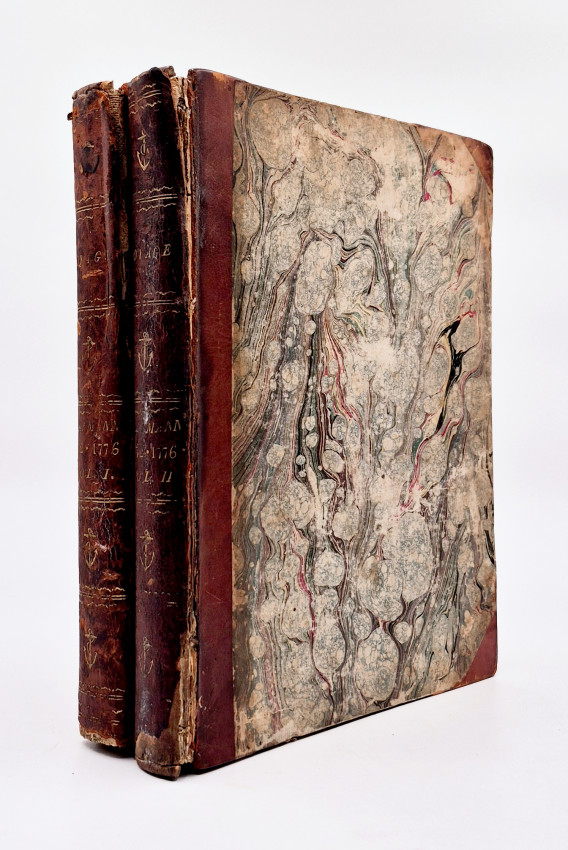
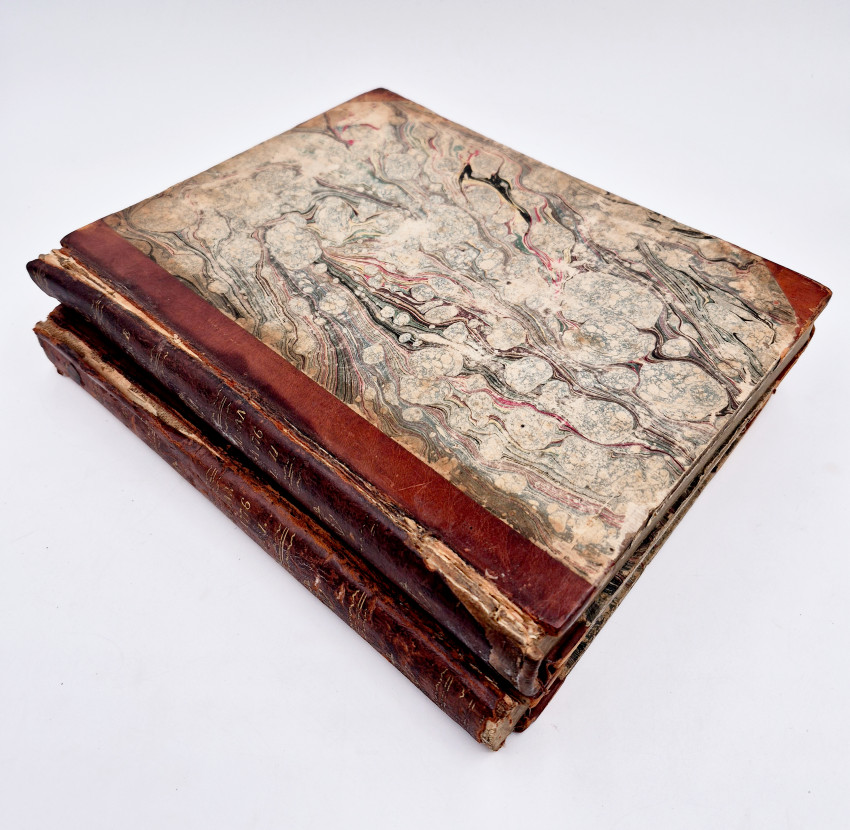
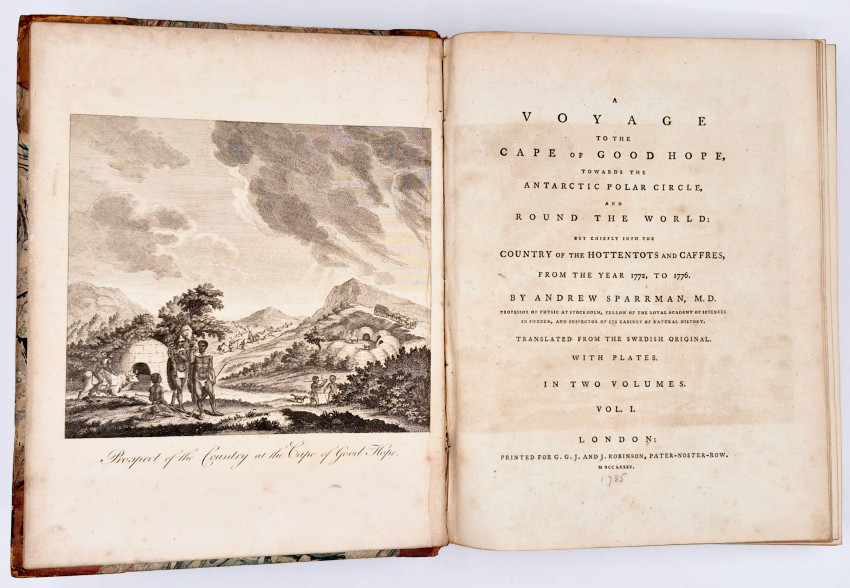
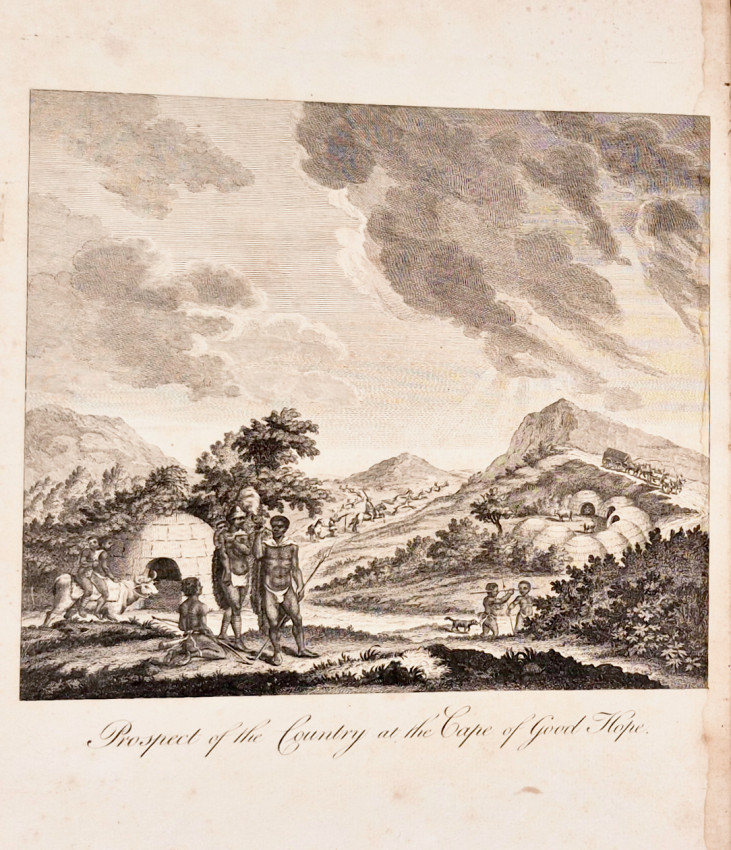
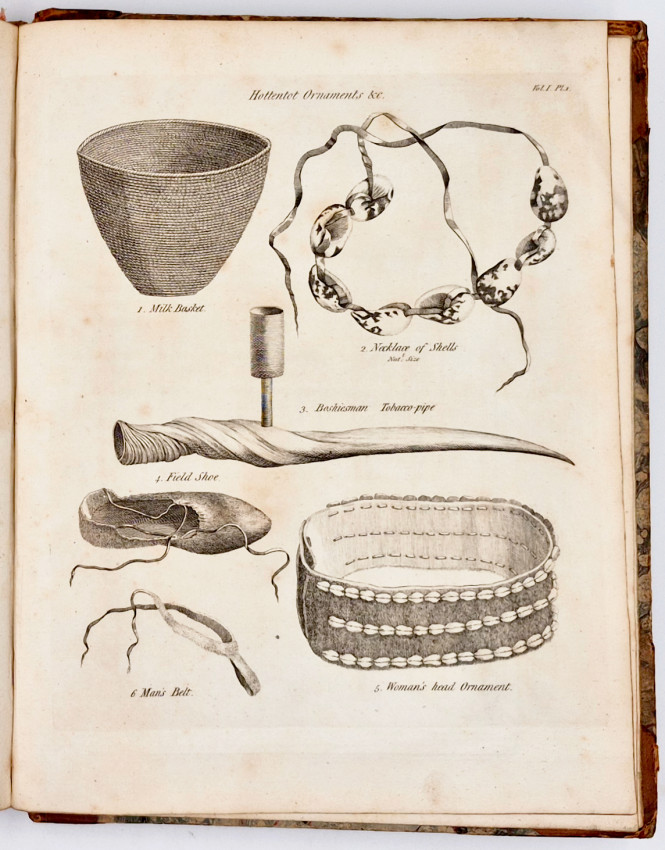
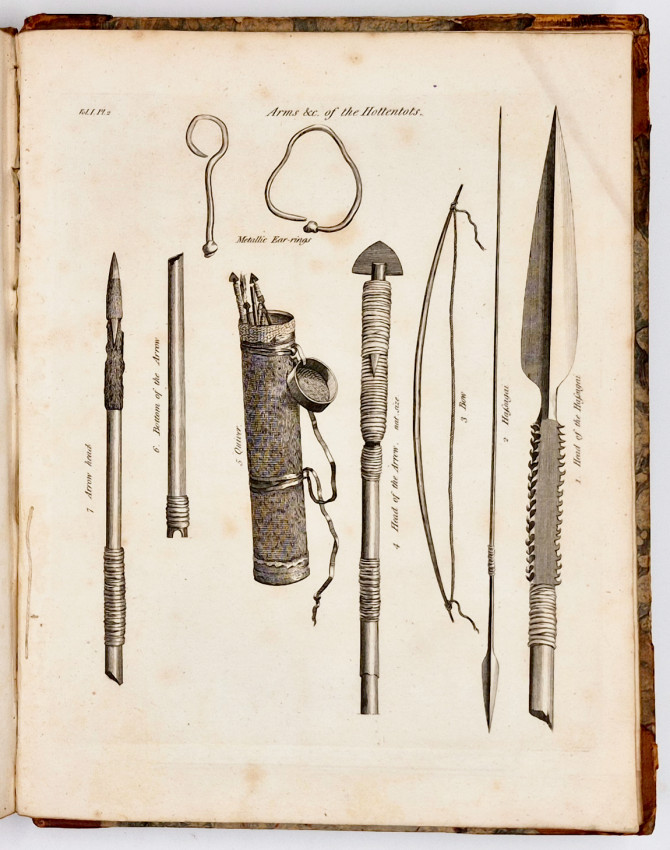
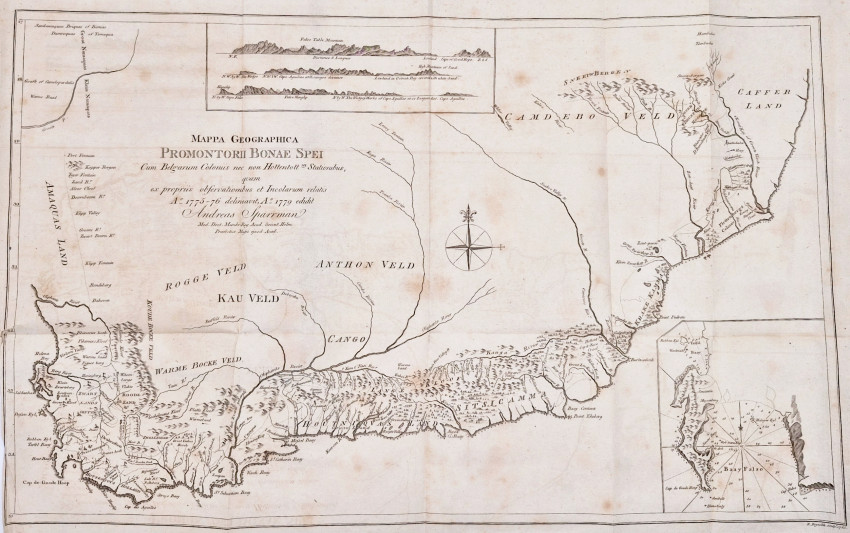
.jpg)
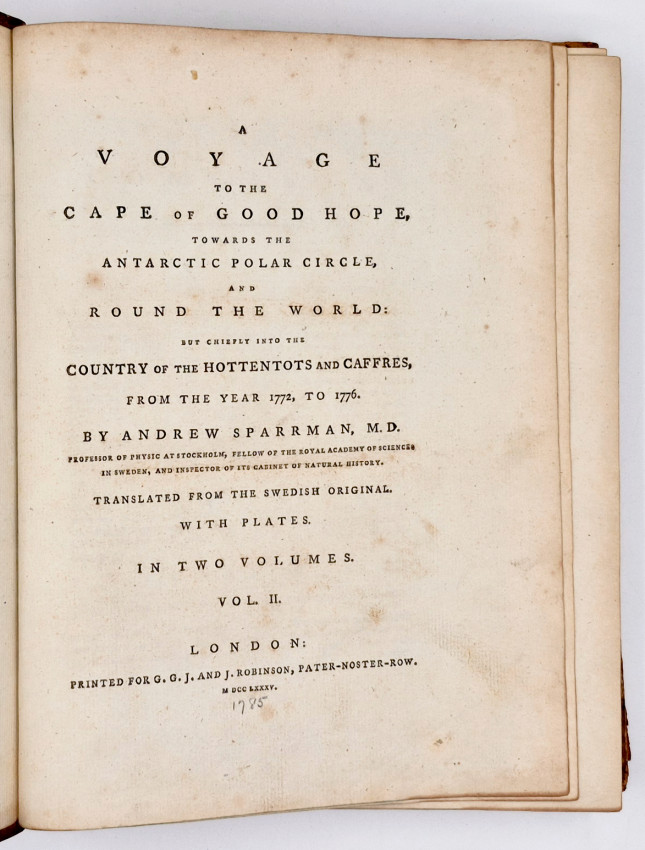
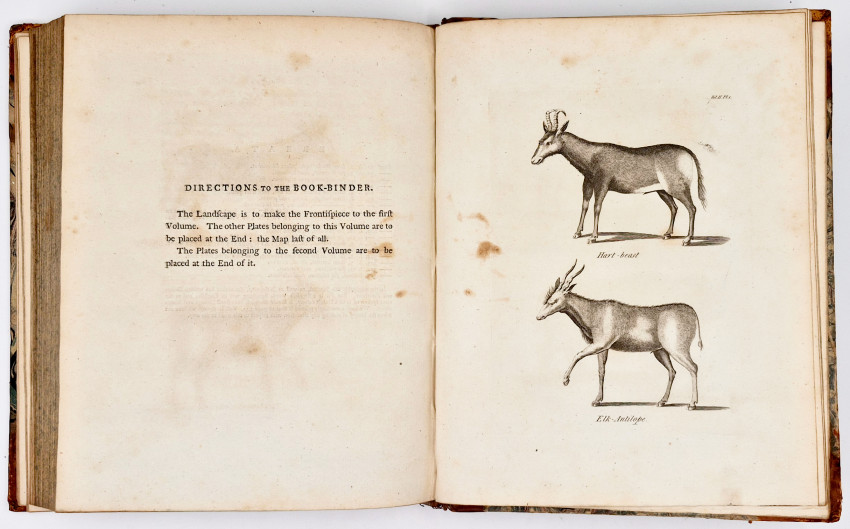
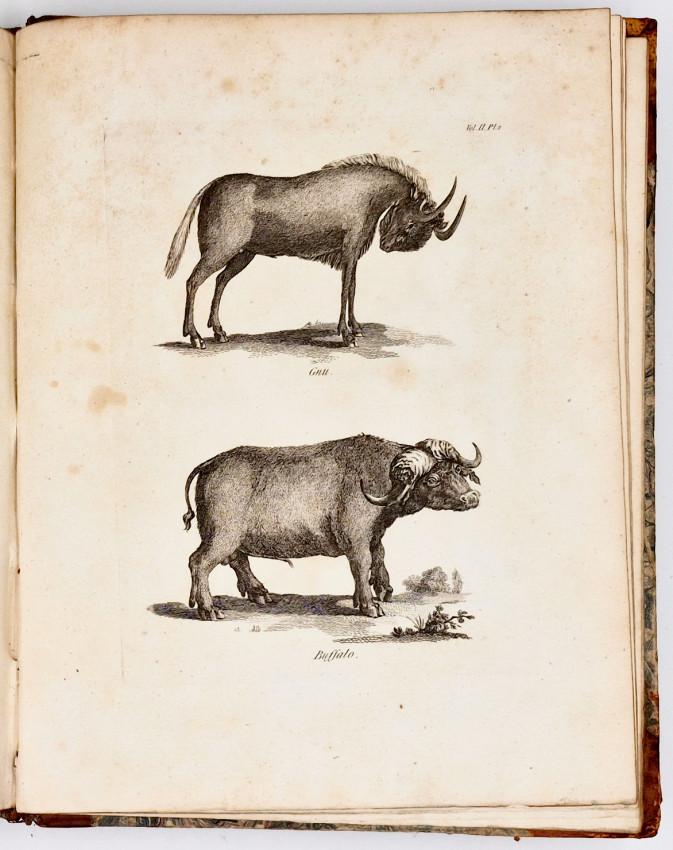
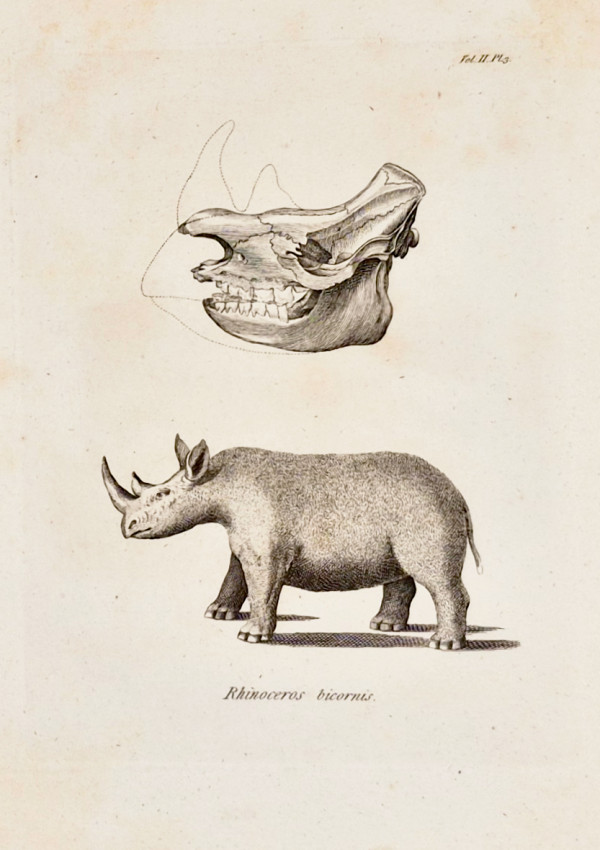
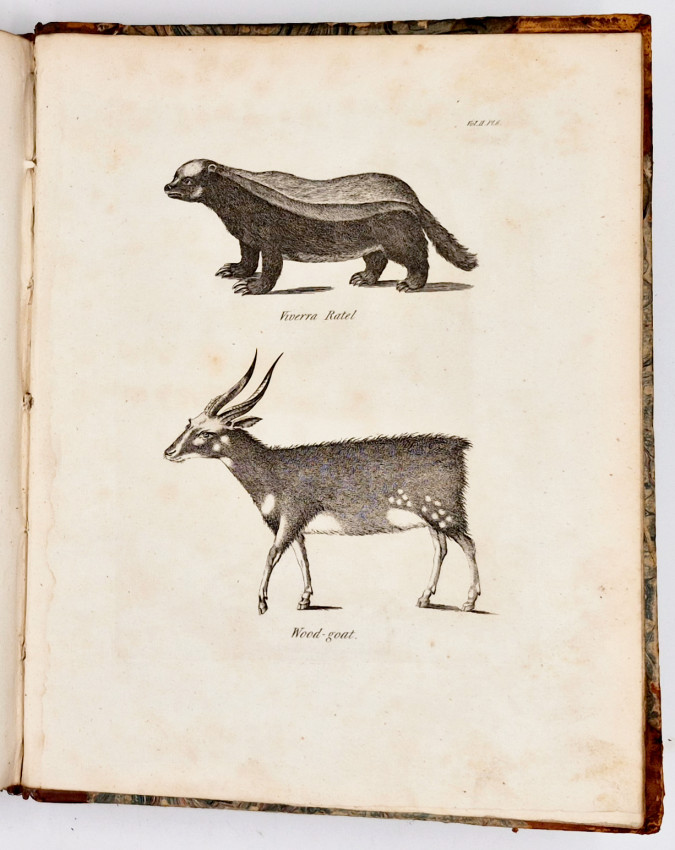







.jpg)





